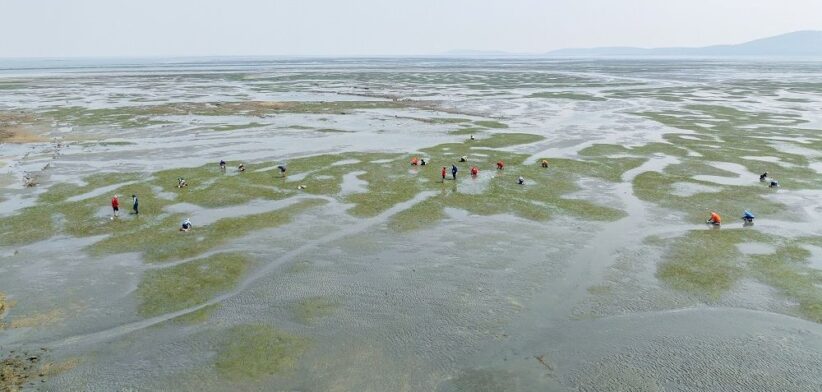The world’s largest seagrass nursery has been unveiled in central Queensland, boosting restoration efforts on the Great Barrier Reef.
Great Barrier Reef Foundation Coastal Habitat Restoration Director Will Hamill said CQUniversity’s SeaGrow nursery, in Gladstone, was the world’s first purpose-built large-scale seagrass restoration nursery and had been developed with leading seagrass researchers and Reef Traditional Owners.
Mr Hamill said the role of seagrass in sustaining the Great Barrier Reef and supporting the health of coastal habitats was critical.
“As home to the world’s largest seagrass ecosystem, the Reef’s meadows provide nurseries and food sources for endangered species like turtles and dugongs whilst acting as natural filters by removing pollutants such as fine sediment and excess nutrients from the water.
“But they also have another critical job – mitigating climate change by storing 400 million tonnes of carbon which is the equivalent weight of eight Sydney Harbour bridges.”
Mr Hamill said the ecosystem was under threat from the impacts of climate change with areas struggling to recover from increasingly severe and frequent weather events.
“This new expanded seagrass nursery will see restoration scaled up significantly using an innovative seed-based method pioneered at the facility, to help repair critical ecosystems whilst unlocking the Great Barrier Reef’s potential to mitigate the impacts of climate change.”
Mr Hamill said the SeaGrow nursery was funded by Coles Group’s partnership with the Great Barrier Reef Foundation and had also received support through the Reef Coastal Restoration Program, funded by the Australian Government’s Reef Trust.
Coles Head of Sustainability Governance and Engagement Anna Stewart said seagrass meadows were vital for the Reef’s resilience.
“They are feeding grounds for marine animals, and they also help to increase biodiversity, improve water quality and protect shorelines,” Ms Stewart said.
“We look forward to the learnings that will be made at this state-of-the-art site, which we hope will help ensure the Reef can be enjoyed for generations to come.”








